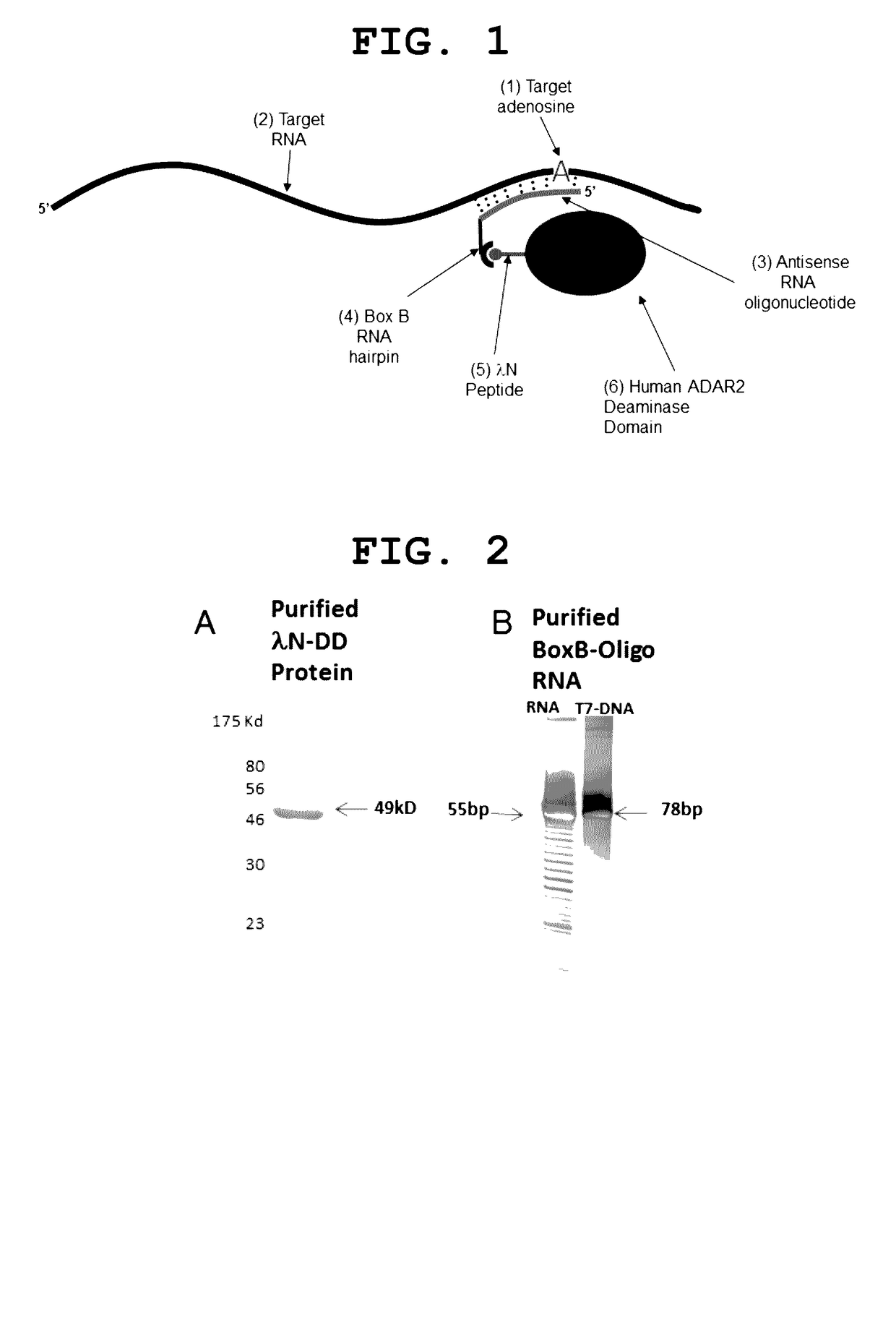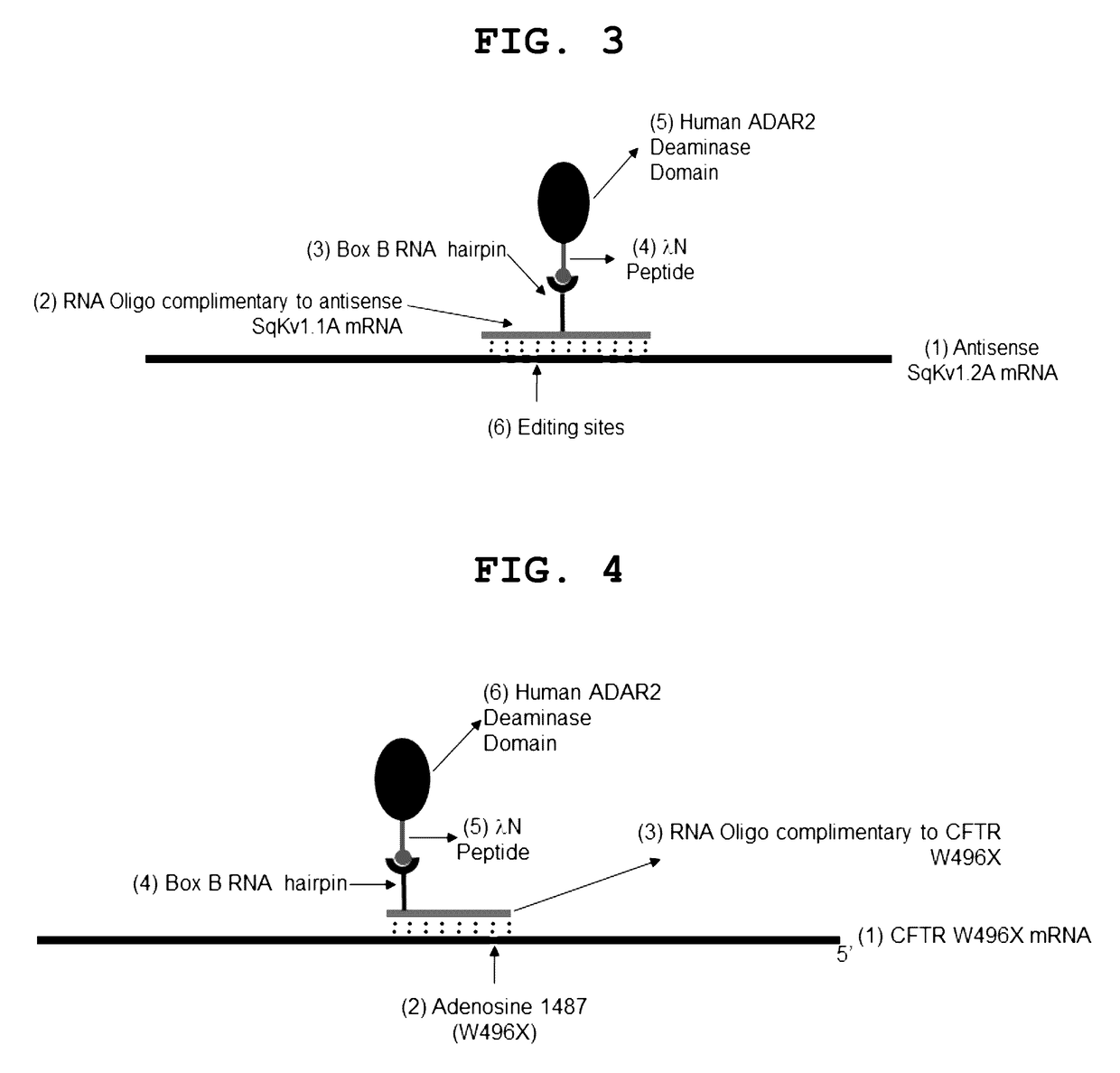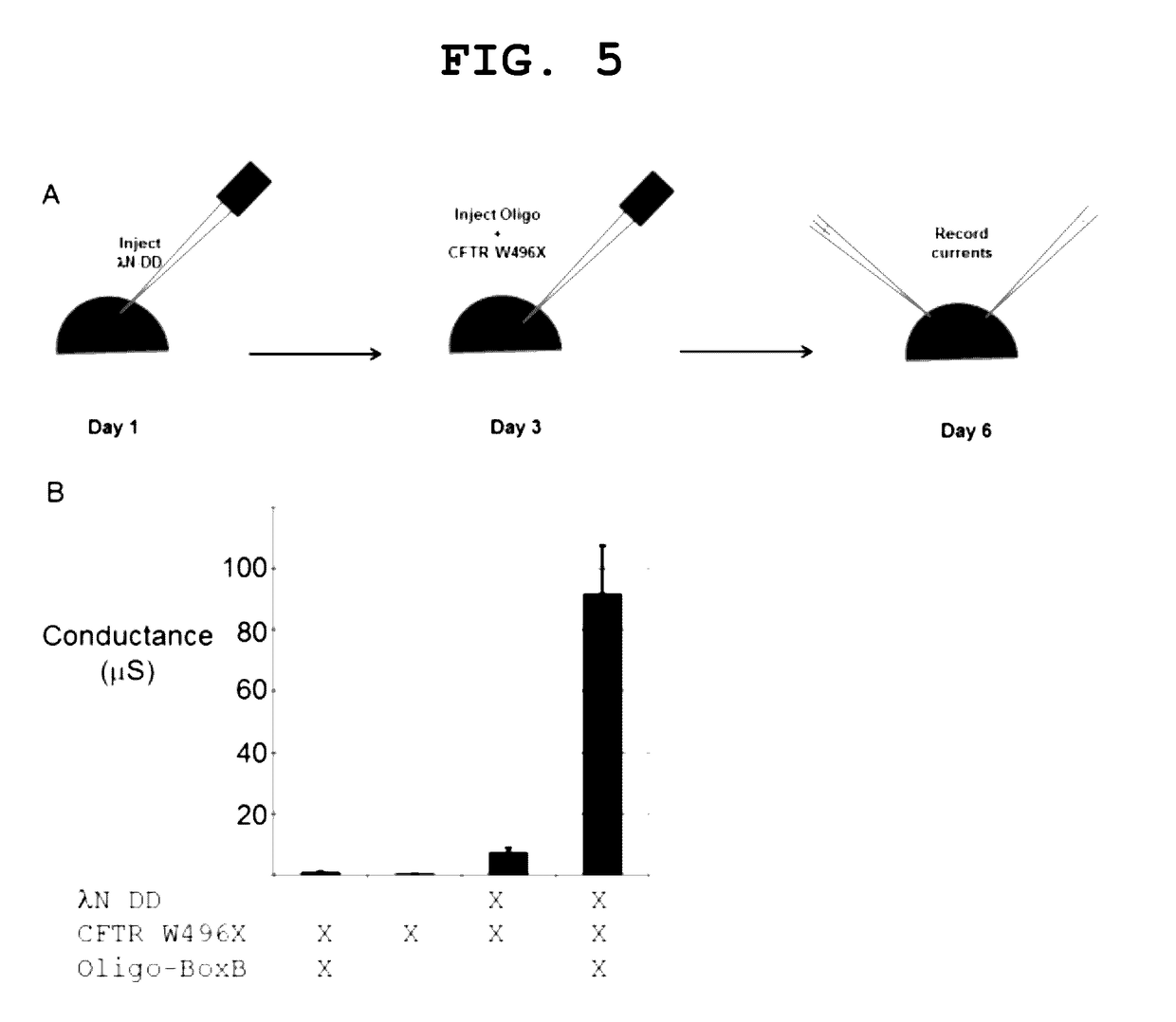Site-directed RNA editing
a rna and site-directed technology, applied in the field of site-directed rna editing, can solve the problem of complex higher order structures that are necessary
- Summary
- Abstract
- Description
- Claims
- Application Information
AI Technical Summary
Benefits of technology
Problems solved by technology
Method used
Image
Examples
Embodiment Construction
[0012]The present invention provides a site-directed RNA editase. It is composed of a protein to carry out the adenosine deamination and an antisense RNA oligo to guide the protein to the correct location. The method of the present invention is illustrated in FIG. 1. A critical aspect of this novel method is how to attach the antisense RNA oligonucleotide, used as a guide, to the deaminase domain of ADAR, to be used to catalyze the editing reaction. For this purpose we used the bacteriophage λ N-peptide RNA binding protein (SEQ ID:3) and the Box B RNA hairpin loop (SEQ ID:2), its natural interaction partner (Chattopadhyay et al., 1995a. Tan & Frankel, 1995). Now the inventive method will be explained in relation to FIG. 1. The first element is an adenosine we wish to target 1 within a RNA molecule 2. This can be any adenosine within any RNA. The second element is an antisense RNA oligonucleotide 3. The 5′ end of the oligonucleotide should begin before (on the 3′ side) of the target ...
PUM
 Login to View More
Login to View More Abstract
Description
Claims
Application Information
 Login to View More
Login to View More - R&D
- Intellectual Property
- Life Sciences
- Materials
- Tech Scout
- Unparalleled Data Quality
- Higher Quality Content
- 60% Fewer Hallucinations
Browse by: Latest US Patents, China's latest patents, Technical Efficacy Thesaurus, Application Domain, Technology Topic, Popular Technical Reports.
© 2025 PatSnap. All rights reserved.Legal|Privacy policy|Modern Slavery Act Transparency Statement|Sitemap|About US| Contact US: help@patsnap.com



